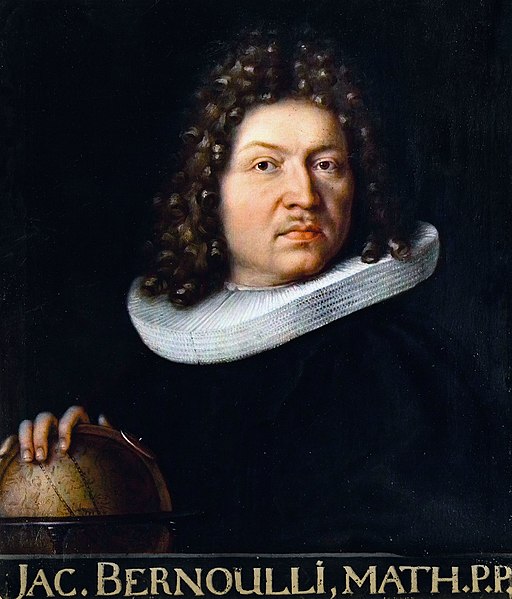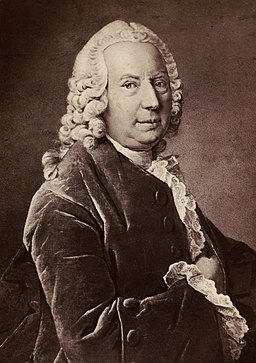Jacob Bernoulli (1655-1705) and Daniel Bernoulli (1700-1782)

While Jacob Bernoulli came from a merchant family, he and his brother and his nephews also greatly influenced the development of mathematics. Jacob studied theology, but secretly also studied mathematics and astronomy. His first publication was in astronomy, but Leibniz's ideas on integral calculus in Acta Eruditorum caught his attention and that of his brother, Johann. By studying the principles Leibniz presented, they added considerably to the development of infinitesimal calculus. Jacob became a mathematics professor at the University of Basel in 1687. He married Judith Stupan and had a daughter and a son.
Jacob Bernoulli's most famous work was Ars Conjectandi
which was published posthumously in 1713. The first part was his
own notes on Christian Huygens' Reasoning on Games of Chance
.
Part II discussed the theory of permutations and combinations. The third section presented questions related to
games of chance and included an explanation of their solutions,
often improving upon others' ideas. Bernoulli's strategy for
solving problems was to reduce them to problems similar to
simpler games of chance involving equally likely cases. He
worked with the problem of estimating the proportion of white
and black balls in an urn with a certain level of accuracy.
He found that not only can one calculate the level of accuracy
in the estimate, but one can also calculate the number of
trials required for a given level of accuracy.
This idea of estimating a parameter with a previously
determined level of accuracy lends itself to the ideas that
led to the modern foundations of hypothesis testing. Bernoulli
died before completing the fourth and final section. It was
different from the other sections in that the topic was more
subjective, relating probability principles to other areas of
life such as moral or economic situations. He was one of the
first to use calculus in probability and one of the first to
recognize the usefulness of probability outside of games.

Jacob Bernoulli's legacy of progress in probability theory extended to his nephew, Daniel Bernoulli, who applied probability theory to specific scenarios. Smallpox affected the population across much of the globe for all recorded history and killed about one in three people who contracted the disease. However, certain strains were more deadly than others, some killing more than half of victims and others only a small proportion. Once infected, a person could not be infected again. One solution to the spread was called variolation, where a healthy individual would purposely come into contact with a less fatal strain, get the disease, hopefully recover, and then be immune from smallpox. The risk here was that a small proportion of those infected from the weaker strain would die when they might not have contracted the disease at all, or at least until much later in their lives. Another risk is that the person may infect others who would not have been infected otherwise. Daniel Bernoulli attempted to determine whether variolation's benefit outweighed the risk. He narrowed the question to answering if variolation when performed on infants increases their life expectancy. He found an increase in life expectancy of about 10 percent. Thus, he argued that variolation should occur for infants to boost public health.
Jacob Bernoulli, followed by his nephew, contributed to the development of probability by extending its study, including estimating errors, and extending its applications.